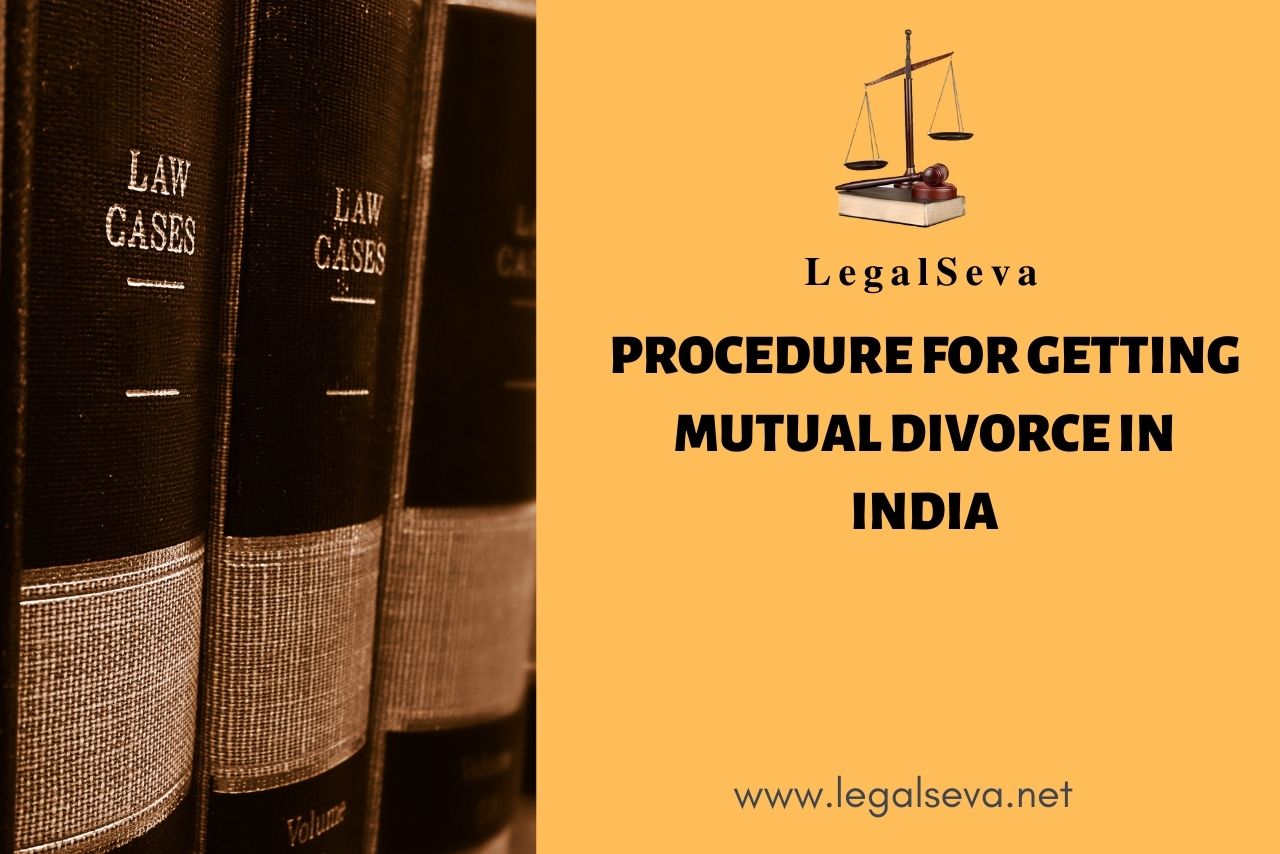Last Updated on January 11, 2021 by Satish Mishra
In this post we will discuss about the procedure and requirements for getting Mutual Divorce Mutual Consent Divorce Steps Chandigarh Panchkula Mohali
Mutual Divorce
Two people may choose to tie themselves in a bond of marriage, just like can they choose to liberate themselves from it. Divorce refers to the dissolution of a marriage, through a specified procedure and under the relevant authority. The conditions which may lead to a divorce are diverse and numerous, but can be categorized on two major bases – disagreement or agreement between spouses. If only one party in a marriage desires a separation, the recourse is a ‘contested divorce’. When both agree to separate, they can seek a ‘mutual divorce’. It is quick, less traumatic, and may involve an amicable settlement, making it the preferred recommendation of many divorce lawyers.
There being various Acts governing marriage in India, mutual divorce is subject to the law under which the marriage had been solemnized. As such, the following Acts and sections are applicable depending upon the faith of the couple:
Also Read- After mutual divorce, marriage reinstated
| Act | Section | Religion |
| Hindu Marriage Act, 1955 | 13B (inserted by Amendment of 1976) | Hindus, Sikhs, Jains, and Buddhists |
| Muslim Personal Law, as is under Muslim Women (Protection of Rights on Divorce) Act, 1986 and Dissolution of Muslim Marriages Act, 1939 | (Extrajudicial) | Muslims |
| Indian Divorce Act, 1869 | 10A (inserted by Amendment of 2001) | Christians |
| Parsi Marriage and Divorce Act, 1936 | 32B (inserted by Amendment of 1988) | Parsis |
| Special Marriage Act, 1954 | 28 | Inter-religious couples |
Most of the aforementioned provisions, however, are similar. Since marriage cannot be annulled at the whim of the parties, there are certain conditions to obtain a mutual divorce.
Requirements
- The couple must have been living separately for at least one year before the divorce
The law requires that both the spouses should be living separately for a minimum of 1 year before they file for divorce. One exception here is the Divorce Act applicable to Christian marriages, which provides that the spouses must have been living separately for at least two years before separation. This condition has been read down to a minimum of one year in the judgement of Saumya Ann Thomas v. Union of India[1], where it was held arbitrary and discriminatory. Thus, the period is now uniformly considered to be one year or more. It is also essential that they have been living separately for one uninterrupted year immediately preceding the petition.
The phrase “living separately” does not necessarily imply different places of residence; it simply means that the parties are not living like a married couple. The Supreme Court clarified this stance in Sureshta Devi v. Om Prakash[2] – a couple may be residing under the same roof yet may not be deemed to be living together, for neither of them may have the desire to perform their marital obligations towards each other. This state must exist for a continuous duration of one year to be eligible to file a divorce.
- Parties unable to live together and have mutually agreed to the dissolution of the marriage.
Parties not being able to live together has been taken to mean that the marriage has reached a point where there is no way of reconciling it. The Apex court in the aforementioned case also cleared that the very fact that a petition of mutual divorce is filed is indicative of this condition.
As for mutual agreement, it is the responsibility of the court to determine that the consent of either of the spouses has not been obtained by coercion or fraud. On the occasion that the court is unable to determine if consent has been so obtained, it will not grant a decree under mutual divorce. The aggrieved party also has the option to appeal to a higher court to strike down the judgement and then to rightfully grant one.
ALSO READ- MUTUAL DIVORCE TOP 10 MYTHS BUSTED.
Considerations before Divorce
While deciding to take a divorce, the parties need to consider three important aspects of their shared relationship:
Maintenance or Alimony: It is considered a duty under law to maintain one’s partner, which does not end with the dissolution of a marriage. A partner is still obligated to pay a reasonable amount to the other who is economically dependent on them. It can also be extended to include their children or parents. In a mutual divorce, the amount and direction of maintenance are decided with the mutual understanding of the parties. They may also agree upon no maintenance, for the law does not specify any minimum amount. The court would grant legal validity to their agreement at the hearing, making it binding upon the parties.
Child Custody: Child custody is one of the most crucial decisions that entail a divorce. Legal custody of a child means that the custodial parent(s) get the right to take the major decisions related to them. Consequently, either one of the parents being vested with such rights gets the ‘sole custody’ of the child; if both of them have the decision making power, they get ‘joint custody’. The couple has the right to mutually agree upon the custody of their children. However, it is up to the court to decide what would be best for the child’s interest. It may or may not decide in favour of the agreement between the parties and grant a decision on its discretion.
Property: Both the spouses have a claim on the property, whether movable or immovable, which may be owned in the name of either of them. They can choose to divide it between themselves, regardless of what the share proportion is as long as it is mutually agreed upon. Until the time a contrary intention appears, both have the right to occupy the property.
ALSO READ- MUTUAL CONSENT DIVORCE WAIVER HIGH COURT CHANDIGARH
Procedure
Having agreed upon the terms that will apply after their divorce, the parties can file a joint petition in a Family Court, which is at the place where
- The marriage was solemnised
- The couple last resided at
- The wife currently resides
Here both of them will be petitioners. The petition is a joint statement that explains the reasons for seeking separation, followed by the agreement between parties relating to child custody, property, etc.
The court will scrutinise it and upon satisfaction direct the parties to record their statements under oath. Earlier, the courts were required to give six months, known as the cooling-off period or reconciliation period, under the provisions of various Acts before the second hearing could be held to finalise the divorce. In the recent judgement of Amardeep Singh v. Harveen Kaur[3], the Supreme Court has declared this provision to be directory instead of mandatory. Now, if the court is satisfied that granting it will prolong the agony of the parties and there is no hope of reconciliation, it could be waived-off. The parties will now be able to file a motion for the second hearing after a week of filing the first petition.
During the cooling-off period, either of the parties can withdraw their consent to mutual divorce. The other party would be left with the only recourse of contested divorce.
After the first motion and cooling-off period have been granted, the parties can file a second motion anytime between six months and eighteen months. If no such motion is filed, the decree for divorce is cancelled. At the second hearing, the court will grant the decree if parties have been unable to reconcile. The marriage now stands dissolved.
If one of the parties remains absent in the second hearing, their consent cannot be assumed simply because they assented in the first hearing. Mutual consent must persist till the second hearing, and only on being absolute about it can the court pass the decree. Otherwise, it may dispose of the proceedings.
ALSO READ- MUTUAL DIVORCE PROCEDURE IN EASY STEPS
Mutual Divorce under Muslim Personal Law
The aforementioned process requires the validity of a competent court for separation. For Muslim couples, this can be done without the court’s intervention. While there are separate ways of divorce for a husband and a wife, Mubarat is the kind of divorce under Muslim law which involves mutual agreement. The proposal to separate may emerge from any party. The wife is not required to offer anything to the husband in return from the Mahr, nor should there be any reason for the divorce, which is irrevocable. The Shias are considered to have a more stringent Mubarat than Sunnis.
Conclusion
Historically, many faiths did not have a system for divorce. Marriage was considered sacred, a bond that lasted lifetimes. Over the years, it has come to be recognised that it is not unusual for people to grow apart. The law has accommodated the dissolution of marriage despite its absence in many religions because the individual right to seek a divorce -The right to flourish without the obligations of a deteriorating relationship – prevails over custom.
Also Read- Step by step procedure to file for a Mutual Divorce
This post was written by Jigyasa Kharbanda
You must seek advice of best/expert Divorce/Matrimonial/Family matter Advocate/Lawyer for your case in Chandigarh Panchkula Mohali Kharar Zirakpur (Punjab and Haryana High Court).
For more info on subject, please dial 99888-17966.
References
+https://highcourtchd.gov.in/hclscc/subpages/pdf_files/4.pdf
+https://indiankanoon.org/doc/1264300/
+https://blog.ipleaders.in/divorce-law-in-india/#Important_Judgments_on_divorce
+https://www.lawctopus.com/academike/divorce-by-mutual-consent/#_ftn17
+https://indiankanoon.org/doc/1301592/
+https://www.indialawoffices.com/knowledge-centre/legal-note-on-mutual-consent-divorce
+https://vakilsearch.com/advice/divorce-in-india/
+http://www.legalserviceindia.com/article/l393-Divorce-under-Muslim-Law.html
+http://www.helplinelaw.com/family-law/DIVORCEB/divorce-by-mutual-consent.html
[1] 2010 (1) KLJ 449
[2] (1992) AIR SC 1904
[3] CIVIL APPEAL NO. 11158 OF 2017

